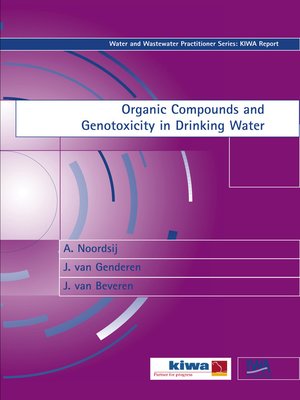Organic Compounds and Genotoxicity in Drinking Water
ebook ∣ Water and Wastewater Practitioner
By A. Noorsij

Sign up to save your library
With an OverDrive account, you can save your favorite libraries for at-a-glance information about availability. Find out more about OverDrive accounts.
Find this title in Libby, the library reading app by OverDrive.



Search for a digital library with this title
Title found at these libraries:
| Library Name | Distance |
|---|---|
| Loading... |
Until recently only lipophilic compounds were analysed in any research on the occurrence of mutanogenic and carcinogenic compounds in water. They were isolated using XAD-resins. They contain approximately half of the total organic material present in water. A clear mutanogenic effect was demonstrated for these compounds using Amestest. The hydrophilic fraction of the organic material was difficult to investigate because of problems with isolation and analysis caused by its high solubility. The high solubility means in practice that the hydrophilic compounds are mobile in conventional treatment systems and in soil and can easily penetrate into drinking water. A method was developed to isolate hydrophilic compounds using a combination of ion exchange and a clean-up with a XAD-resin. The isolated compounds were examined with the Amestest for the presence of mutanogenic compounds. For some tested water types a mutanogenic effect was found in the lipophilic material. Due to oxidation with ozone, mutanogenic compounds can be formed from (non-mutanogenic) industrial pollutions. No mutanogenic activity was found in the hydrophilic organic material of all examined water types, even after ozone oxidation or chlorination. It was hypothesized that hydrophilic compounds can not reach the DNA of the cell, thus they do not play any (geno) toxicological role.







